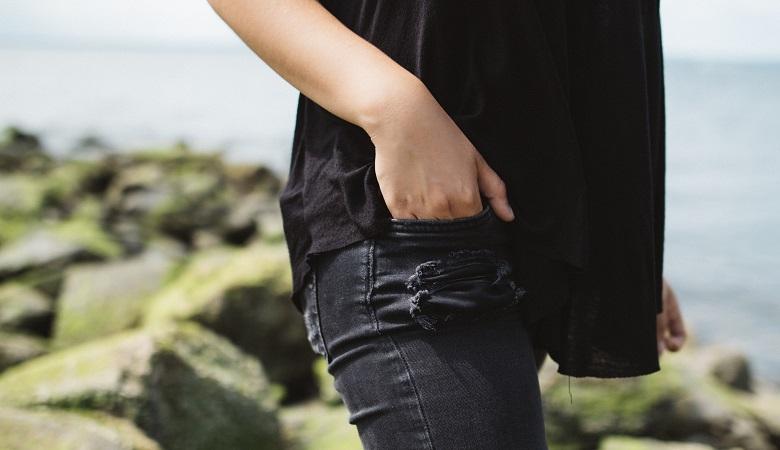The sartorial injustice of women's pockets finally proven
Only 10% of women's pockets can hold a woman's hand, while 100% of men's pockets can hold a man's hand. To get these figures, the journalistic organization The Pudding measured the pockets of jeans from twenty different brands (including Levi's, Lee, H&M and Abercrombie). "Our measurements confirmed what every woman already knows: Women's pockets are ridiculous," the study authors say. And to those who would already answer that "it's normal since men are taller than women", they explain that they compared jeans of a similar size, 32 inches in the waist, on both sides.
On average, the front pockets of women's jeans are 48% shorter and 6.5% narrower than men's. The Pudding also had “fun” comparing the pockets of the two genders by measuring what they could contain. Results: an iPhone X and a wallet fit in 40% of women's pockets and 100% of men's pockets, while a Samsung Galaxy can be inserted in 20% of women's pockets against 95% of men's pockets.
Difficult to fit a mobile phone into a woman's pocket © Mikaela Shannon / Unsplash
If this particularity of clothing may seem trivial, it nevertheless represents a real problem for some women. Men can thus afford to store their personal belongings in their pockets (wallet, mobile phone, set of keys, etc.) while women have to rely on a bag to do the job, which is not to displease "the handbag industry and its 8 billion dollars", rightly recalls The Pudding. The case of the inside pockets of jackets is even more obvious: men have them, but not women (or very rarely). Worse still: some women's pants contain "fake pockets", that is to say a seam representing a pocket... but without a hole.

To find the origin of this “clothing injustice”, you have to go back to the Middle Ages. Back then, both men and women had “pockets” tied around their waists, like little fanny packs. But from the 17th century, pockets were sewn directly onto men's clothing, while women kept their "portable" pockets, very large pockets of fabric concealed under their dresses.
@ForHerGrace *Claudea burst into laughter, drooping down as she clung to the sturdy woman*"I'm sorry it's just...… https://t.co/ zFB8QiZs4v
— Claudea Tue Jun 08 20:57:51 +0000 2021
Until the end of the 18th century, pockets were tied at the waist, under the main dress © National Museums Liverpool
The French Revolution will change the situation. While the mid-18th century, bathed in Rococo style, produced decadent wide skirts, the women's wardrobe changed drastically towards the end of the century: the skirts tightened, the waist rose and the silhouette thinned out. Such a neoclassical look no longer offers any room for pockets. However, women always need to carry their belongings. This is the birth of the reticule, the ancestor of the handbag. Women's pockets just have to disappear.
For The Pudding, this is a real equality issue. “Pockets are private and hidden spaces. By limiting the space in which women (from the 18th century, editor's note) could safely contain their belongings and by confiscating the mobility of their two hands, the era also limited their ability to navigate in public space, to carrying private letters and traveling alone. This idea is outdated.
In 1954, the famous couturier Christian Dior pronounced a sentence symbolizing all the sexism of this “pocketgate”: “Men have pockets to keep things, women for decoration”. Except that since then, times have changed and so have the habits (and rights) of women. The Pudding says it so well: “What do we want? Functional pockets. When do we want them? Now, or rather several centuries ago”.









